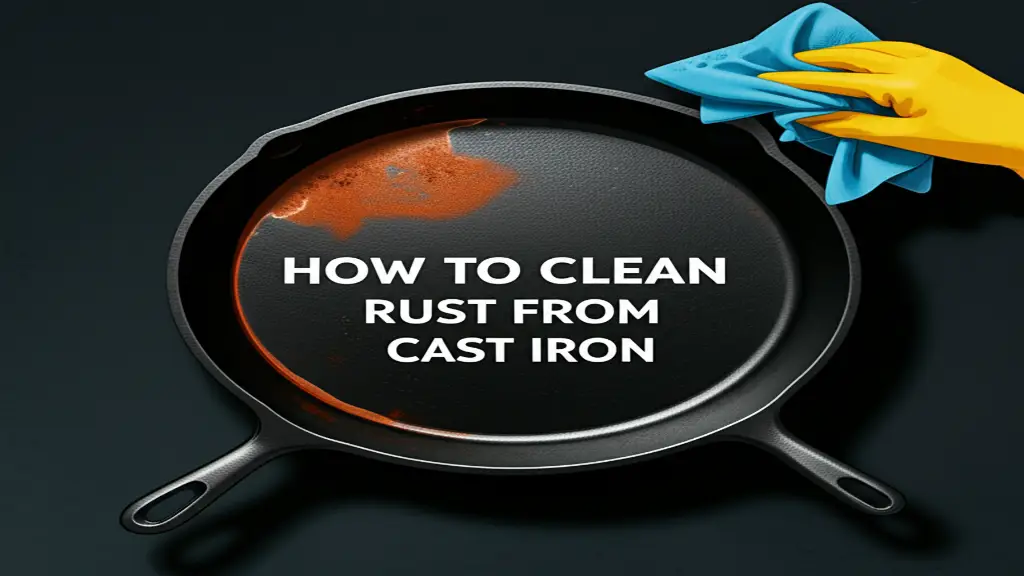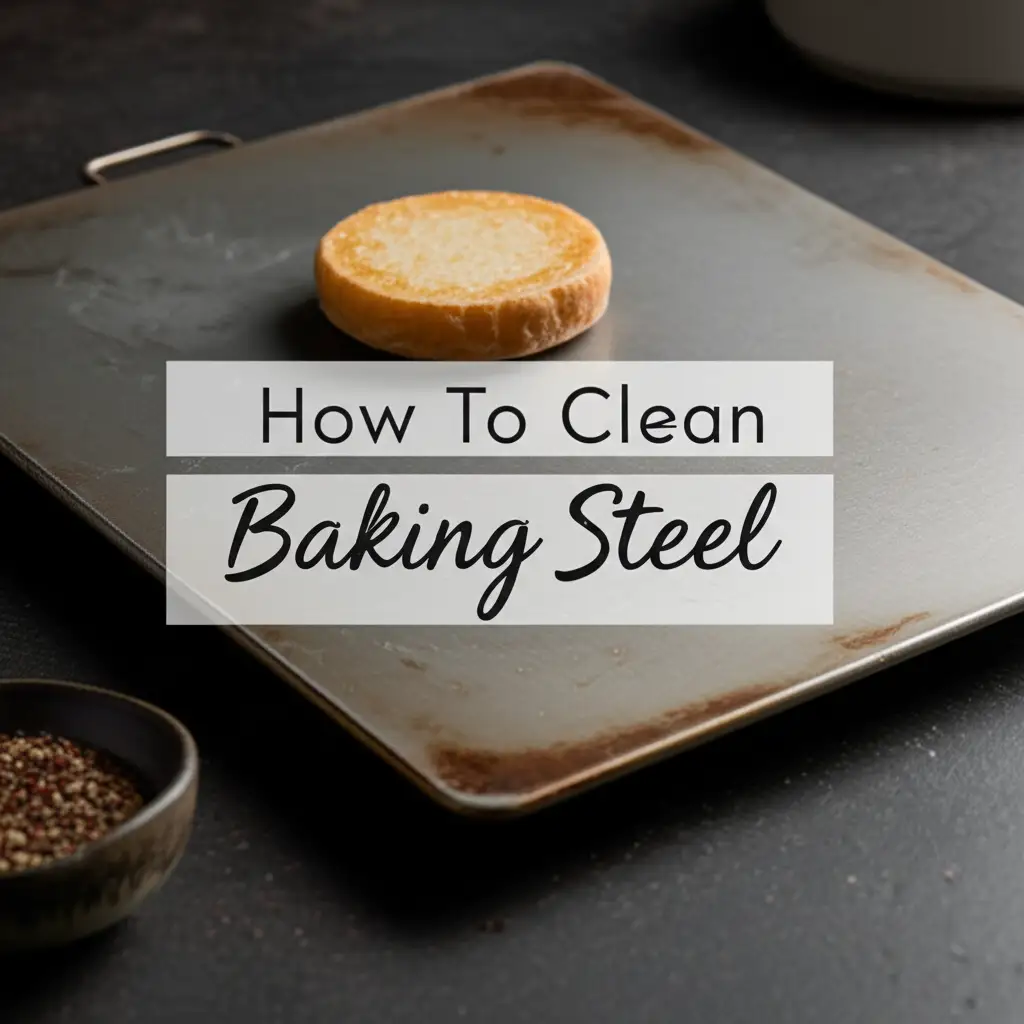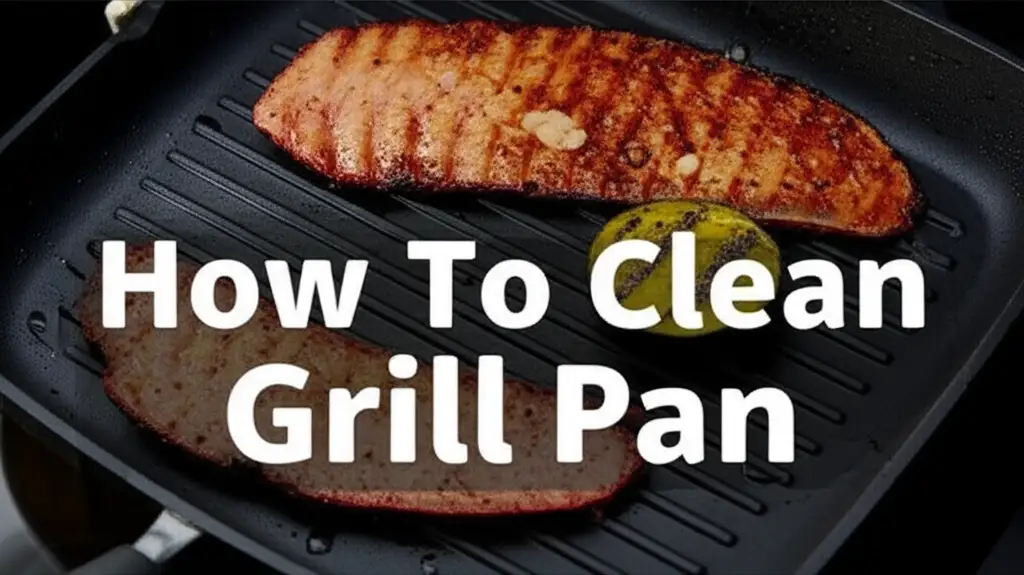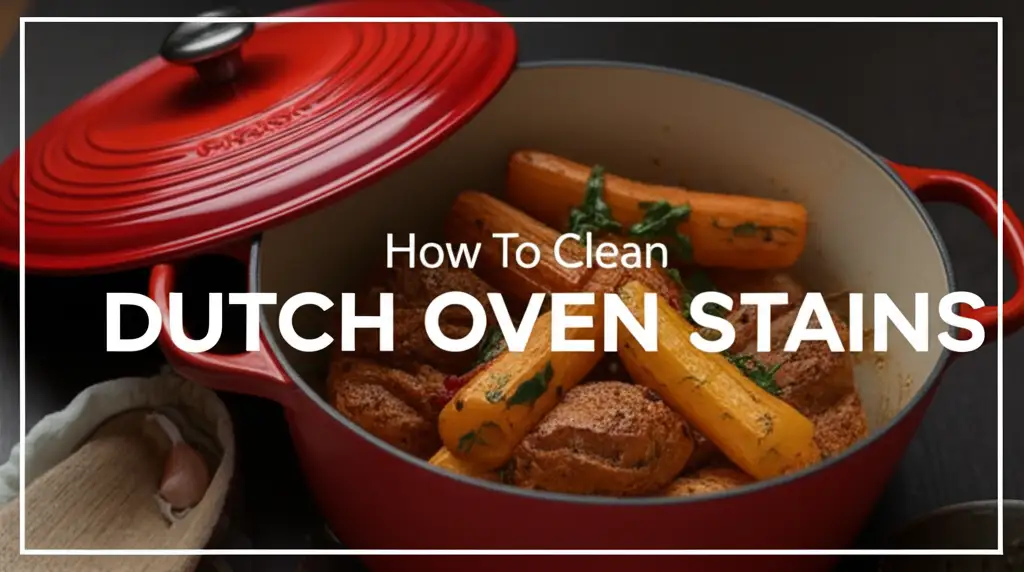· Kitchen Care · 13 min read
How To Clean Rust From Cast Iron

How To Clean Rust From Cast Iron Effectively
Discovering rust on your beloved cast iron cookware can feel like a setback. This sturdy kitchen essential, passed down through generations, sometimes shows signs of neglect. Rust appears when moisture combines with bare cast iron surfaces. The good news is that rust does not mean the end for your pan.
You can easily bring your cast iron pieces back to life. Restoring cast iron requires a few simple steps and common household items. I will show you how to clean rust from cast iron using proven techniques. We will cover identifying rust, gathering supplies, and applying different cleaning methods. I will also guide you through the crucial re-seasoning process and share tips for future rust prevention.
Takeaway
- Identify the type of rust on your cast iron.
- Choose a cleaning method based on rust severity.
- Always re-season cast iron after rust removal.
- Proper storage prevents future rust formation.
To clean rust from cast iron, gently scrub the affected areas using abrasive materials and natural cleaners like baking soda, vinegar, or salt. Rinse the pan, ensure it is completely dry, and then apply several layers of seasoning to protect the metal from future corrosion.
Understanding Rust on Cast Iron Cookware
Rust forms on cast iron when iron reacts with oxygen and water. This chemical process creates iron oxides, which appear as reddish-brown flakes. Cast iron cookware is especially prone to rust because it lacks a protective layer. Unlike stainless steel, cast iron needs a seasoned surface to repel moisture.
You may see rust in several forms. Light surface rust looks like a thin orange film. This type of rust is easy to remove. Deeper rust can create pits or scale, requiring more effort. Do not worry if your pan has significant rust. Most cast iron pans can be saved. Understanding how rust starts helps you prevent it in the future.
Why Cast Iron Rusts So Easily
Cast iron is an iron alloy. Iron is a reactive metal. When exposed to air and moisture, iron oxidizes. This process is rust. The seasoning on cast iron creates a barrier. This barrier protects the raw iron from moisture.
If this seasoning layer gets damaged or removed, rust can form quickly. Common reasons for rust include:
- Improper drying: Leaving water on the pan after washing.
- High humidity: Storing cast iron in damp environments.
- Acidic foods: Cooking acidic foods can strip seasoning.
- Harsh cleaning: Using soap or abrasive pads too often without re-seasoning.
Gathering Your Rust Removal Tools
Before you begin the cleaning process, collect all necessary items. Having everything ready makes the job smoother. You probably already own most of these supplies. I find that preparation saves time and effort.
Here are the basic tools and cleaning agents you will need:
- Abrasive Scrubber: Steel wool pads, stiff nylon brushes, or a chainmail scrubber.
- Cleaning Agents: White vinegar, baking soda, coarse salt.
- Cooking Oil: Flaxseed oil, grapeseed oil, or vegetable oil for seasoning.
- Towels: Paper towels or clean cloths.
- Safety Gear: Rubber gloves (optional, but good for protecting hands).
Some stubborn rust might require stronger measures. For example, a heavy-duty wire brush attachment for a drill can help. However, I usually start with gentler methods first. You can escalate to stronger tools if needed. Always prioritize the least abrasive method that gets the job done.
Method 1: The Vinegar and Baking Soda Power Clean
This method uses the acidic properties of vinegar and the abrasive power of baking soda. It is one of the most effective ways to clean rust from cast iron. I often recommend this approach for moderate rust. The fizzing action helps loosen rust particles. This approach is similar to how you might clean a dishwasher with vinegar and baking soda.
Step-by-Step Vinegar Soak and Scrub
- Prepare a Vinegar Solution: Mix equal parts white vinegar and water in a large container. Ensure the container is large enough to submerge your cast iron piece. I use a plastic tub for larger skillets.
- Soak the Cast Iron: Place your rusted cast iron item into the vinegar solution. Make sure the rusty parts are completely covered. The soaking time depends on the rust severity. Light rust might need only 30 minutes. Heavy rust could require a few hours, or even overnight. Check it periodically. Do not leave it too long, as vinegar can strip all seasoning.
- Remove and Scrub: Take the cast iron out of the solution. You will see the rust has softened. Use a stiff brush or steel wool to scrub away the loosened rust. You might need to apply some elbow grease here. Focus on all rusted areas.
- Rinse Thoroughly: Rinse the cast iron under warm water. Make sure to remove all vinegar residue. Any remaining vinegar can cause new rust to form quickly.
- Baking Soda Paste: Make a thick paste with baking soda and a small amount of water. Apply this paste directly to any remaining rust spots. Scrub with a non-abrasive pad. The baking soda neutralizes any remaining acid from the vinegar. It also provides a gentle abrasive for polishing. This technique works well for general cleaning too, such as when you clean with vinegar and baking soda around the house.
- Final Rinse and Dry: Rinse again thoroughly. Dry the cast iron immediately and completely. Use paper towels or a clean cloth. You can also place it on a stovetop over low heat for a few minutes. This ensures all moisture evaporates.
Method 2: Salt and Potato Scrub for Lighter Rust
This method is great for surface rust or for a less aggressive cleaning approach. It uses the abrasive quality of coarse salt combined with the oxalic acid found in potatoes. Oxalic acid helps dissolve rust. I find this method simple and effective for mild cases. It does not require soaking like the vinegar method.
The Gentle Salt Scrub Technique
- Prepare the Pan: First, give your cast iron a quick wash with hot water and a mild dish soap to remove any loose debris or grease. Rinse and dry it partially.
- Apply Coarse Salt: Sprinkle a generous amount of coarse salt into the rusted areas of your cast iron pan. Use enough to cover the rust. Kosher salt or sea salt works best due to its larger granules.
- Cut a Potato: Cut a raw potato in half. The cut side will be your scrubbing tool. The potato acts as a natural handle and releases oxalic acid.
- Scrub with Potato: Use the cut side of the potato to scrub the salt into the rust. Apply firm pressure. The salt acts as an abrasive, and the potato’s acid helps lift the rust. Keep scrubbing until the rust visibly diminishes. You may need to cut a fresh potato slice if the first one becomes too soft or worn.
- Wipe and Rinse: Wipe away the salt and rust residue with a paper towel. Then, rinse the cast iron thoroughly under warm water. Ensure all salt is gone.
- Immediate Drying: Dry the cast iron immediately and completely. Place it on a stovetop over low heat for a few minutes. This step is critical to prevent new rust from forming.
This method is particularly good for maintaining your cast iron after cooking, especially if you want to remove any crud off a cast iron skillet. It helps keep the surface smooth and rust-free without stripping away all the seasoning.
Method 3: Steel Wool and Soap for Stubborn Rust
For very stubborn rust or deeply pitted areas, sometimes you need a more aggressive approach. Steel wool combined with a mild dish soap can provide the necessary abrasive power. I use this method when other, gentler techniques have not worked. Be aware this method will completely strip any existing seasoning. This is fine, as you will re-season the pan later.
Aggressive Cleaning Steps
- Prepare the Pan: Rinse the cast iron with warm water. Remove any loose debris. Do not worry about drying it completely at this stage.
- Apply Dish Soap: Put a few drops of mild dish soap onto the rusted areas. You can also apply it directly to your steel wool pad. Do not use harsh detergents; a gentle liquid dish soap is best.
- Scrub with Steel Wool: Use a fine or medium-grade steel wool pad. Scrub the rusted areas with firm, circular motions. The steel wool’s abrasiveness, combined with the soap, will lift the rust. Keep scrubbing until the rust disappears and you see the bare metal underneath. For very deep rust, you might need to use a bit more pressure.
- Rinse Thoroughly: Rinse the cast iron pan under warm running water. Ensure all rust particles and soap residue are completely washed away. Check all crevices for hidden rust.
- Inspect and Repeat (if necessary): Examine the pan. If you see any remaining rust, repeat the scrubbing process. Continue until the entire surface is rust-free. The goal is to see a consistent gray color on the bare iron.
- Immediate and Complete Drying: This is the most crucial step after a heavy scrub. Dry the cast iron immediately. Use a clean towel to absorb all surface water. Then, place the pan on your stovetop over medium-low heat for 5-10 minutes. This heats the pan and ensures every last bit of moisture evaporates. The pan should be bone dry and warm to the touch. This extreme drying prevents “flash rust” from forming instantly.
Post-Cleaning Care: Re-Seasoning Your Cast Iron
After successfully cleaning rust from cast iron, the pan’s bare metal is exposed. This bare metal is highly vulnerable to new rust. Re-seasoning is not optional; it is essential. Seasoning creates a durable, non-stick, and protective layer. This layer prevents rust and improves cooking performance. I find this step the most satisfying part of restoring cast iron.
The Essential Re-Seasoning Process
- Preheat Oven: Preheat your oven to 450-500°F (230-260°C). This high temperature helps polymerize the oil.
- Apply a Thin Oil Layer: Once your cast iron is completely dry and still warm from the stovetop drying, apply a very thin layer of cooking oil. Use an oil with a high smoke point like flaxseed oil, grapeseed oil, or vegetable oil. Apply with a paper towel. Ensure you cover every part of the pan, inside and out, including the handle.
- Wipe Off Excess Oil: This step is critical. Use a fresh, clean paper towel to wipe off as much oil as you possibly can. The pan should look dry, almost as if no oil was applied. A common mistake is using too much oil. Too much oil will result in a sticky, gummy finish.
- Bake Upside Down: Place the cast iron pan upside down on the middle rack of your preheated oven. Placing it upside down helps drain any excess oil that might drip. Put a baking sheet or aluminum foil on the rack below to catch any drips.
- Bake for One Hour: Bake the pan for one hour at the high temperature. The oil will bake onto the surface, forming a hardened layer. This process is called polymerization.
- Cool in Oven: After one hour, turn off the oven. Let the pan cool completely inside the oven. This slow cooling helps the seasoning set. Do not remove the pan while it is hot.
- Repeat Layers (Optional but Recommended): For best results, repeat the oiling and baking process 3-5 times. Each layer adds to the durability and effectiveness of the seasoning. My goal is always to achieve a deep, dark, non-stick surface. The more layers, the better the rust protection.
Preventing Future Rust on Cast Iron
Preventing rust is much easier than removing it. Once you have successfully cleaned and re-seasoned your cast iron, maintaining it becomes straightforward. My best advice is to make proper care a regular habit. Consistent care keeps your cast iron in prime cooking condition for years.
Here are my top tips for preventing rust:
- Dry Immediately and Completely: This is the golden rule. After washing, immediately dry your cast iron. Use a towel, then place it on a low burner for a few minutes. This ensures all moisture evaporates. You can even hear the slight sizzle as water vaporizes.
- Apply a Thin Oil Coat After Each Use: After drying, apply a very thin layer of cooking oil. Wipe it in with a paper towel. This adds a microscopic protective barrier. This small step makes a huge difference.
- Avoid the Dishwasher: Dishwashers strip away seasoning. The harsh detergents and prolonged exposure to hot water are detrimental. Never put cast iron in a dishwasher.
- Limit Soap Usage: For most cleaning, hot water and a stiff brush or scraper are enough. Mild dish soap can be used for tough messes, but always re-season a light coat of oil afterwards. Too much soap breaks down the seasoning.
- Store Properly: Store your cast iron in a dry place. Avoid damp cabinets or humid environments. If stacking pans, place a paper towel between them. This prevents moisture buildup and protects the cooking surface.
- Avoid Long Soaks: Do not leave cast iron soaking in water for extended periods. This quickly leads to rust. If food is stuck, try boiling water in the pan for a few minutes. Then scrape it clean.
- Cook Oily Foods: Regularly cooking with oil, especially fatty meats, helps maintain the seasoning. The fat further bakes into the surface with use.
Frequently Asked Questions
Can rust damage cast iron permanently?
Most rust on cast iron is not permanent. Surface rust is common and easy to remove. Even deeply rusted pans can often be restored. The key is to clean it thoroughly and re-season it immediately. Only extreme, long-term pitting might make a pan unusable.
How often should I season my cast iron?
You should apply a light coat of oil after every use and dry it completely. A full re-seasoning, involving baking multiple layers, is typically needed after deep cleaning like rust removal. Otherwise, you might only need a full re-seasoning every few months, depending on use.
Is it safe to cook on rusted cast iron?
No, it is not safe to cook on rusted cast iron. Rust is iron oxide, which can be harmful if ingested in large quantities. More importantly, rust damages the non-stick surface. This makes food stick and ruins your cooking experience. Always clean and re-season any rusted areas before use.
What if the rust is very severe and pitted?
For very severe and pitted rust, you might need more aggressive methods. An electric sander with fine-grit sandpaper or a wire brush attachment for a drill can help. Always wear safety goggles and gloves. After removing the rust, follow the re-seasoning process carefully. Multiple seasoning layers are crucial for pitted pans.
Can I put cast iron in the dishwasher?
No, never put cast iron in the dishwasher. Dishwashers use harsh detergents and prolonged hot water cycles. These actions strip away the protective seasoning layer. This leaves your cast iron vulnerable to immediate rusting. Always handwash cast iron.
How does seasoning prevent rust?
Seasoning prevents rust by creating a protective barrier. This barrier comes from polymerized oil. When oil is heated to its smoke point, it bonds with the iron. This bond forms a non-stick, non-porous layer. This layer acts as a shield, preventing moisture and oxygen from reaching the raw iron and causing rust.
Conclusion
Bringing a rusted cast iron pan back to life is a rewarding process. We have explored several effective methods to clean rust from cast iron, from gentle salt scrubs to more aggressive steel wool. Remember, the core steps involve removing the rust, thoroughly drying the pan, and then carefully re-seasoning it. This ensures its longevity and performance.
Do not let a little rust deter you from using your cast iron. With the right techniques and consistent care, your cast iron cookware will serve you well for many years. Regular maintenance, such as proper drying and light oiling after each use, will keep rust at bay. So go ahead, restore your pan, and enjoy the unique cooking experience that only cast iron provides!
- cast iron
- rust removal
- cookware maintenance
- seasoning
- cleaning tips




